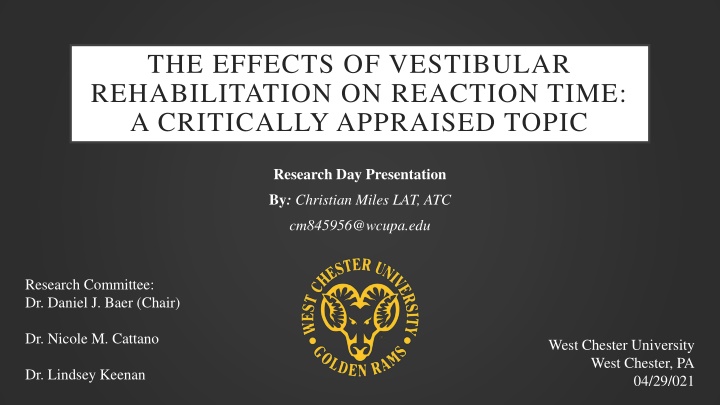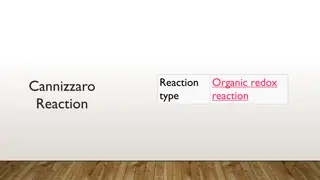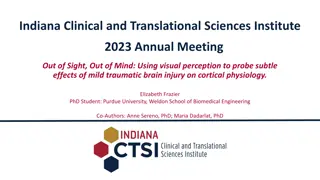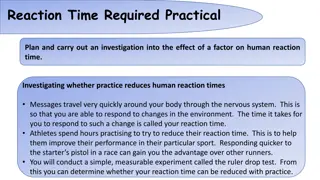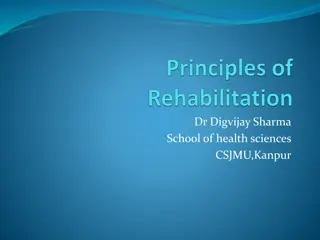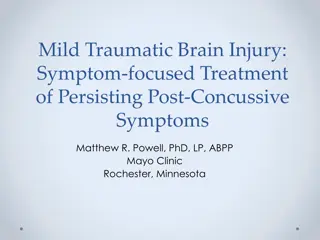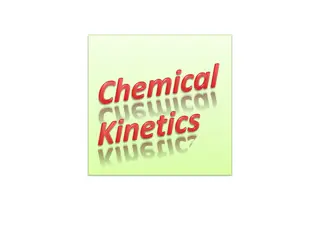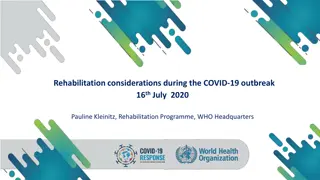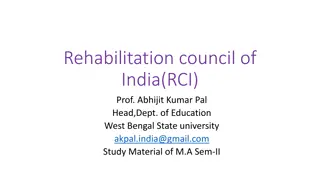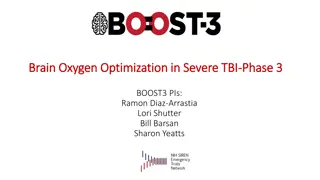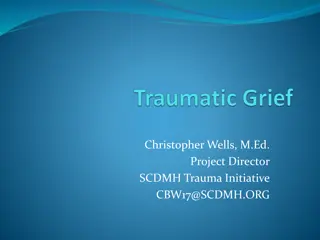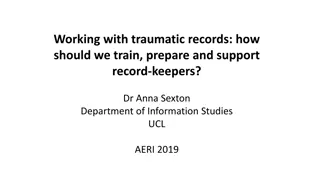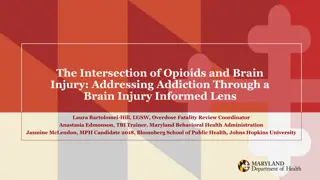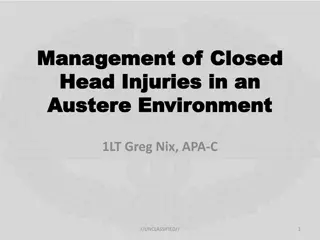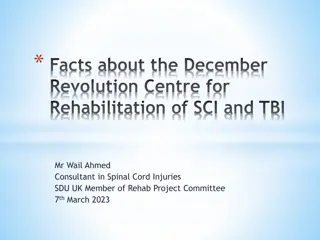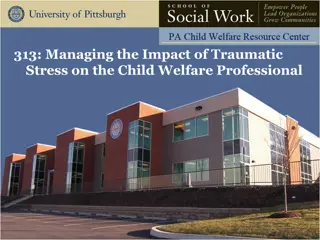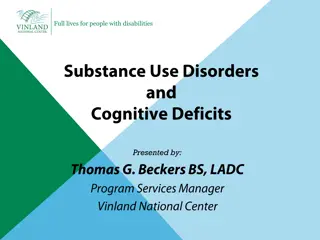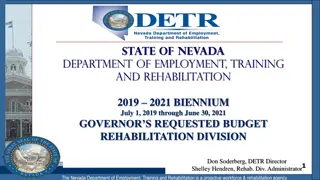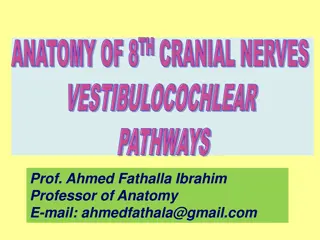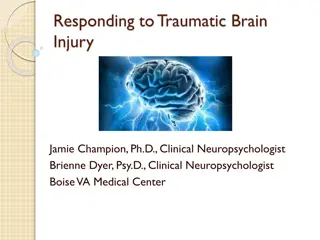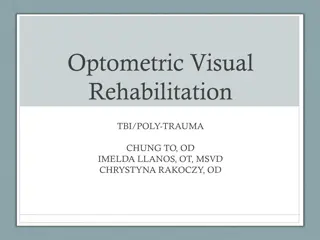Effects of Vestibular Rehabilitation on Reaction Time in Mild Traumatic Brain Injuries
This critically appraised topic explores the impact of vestibular rehabilitation on reaction time post mild traumatic brain injuries. It delves into the importance of reaction time in concussion rehabilitation, highlighting the potential benefits of vestibular rehabilitation programs in improving reaction time and aiding in recovery. The study aims to review current evidence to understand the role of vestibular rehabilitation in enhancing cognitive function following concussions.
Download Presentation

Please find below an Image/Link to download the presentation.
The content on the website is provided AS IS for your information and personal use only. It may not be sold, licensed, or shared on other websites without obtaining consent from the author.If you encounter any issues during the download, it is possible that the publisher has removed the file from their server.
You are allowed to download the files provided on this website for personal or commercial use, subject to the condition that they are used lawfully. All files are the property of their respective owners.
The content on the website is provided AS IS for your information and personal use only. It may not be sold, licensed, or shared on other websites without obtaining consent from the author.
E N D
Presentation Transcript
THE EFFECTS OF VESTIBULAR REHABILITATION ON REACTION TIME: A CRITICALLY APPRAISED TOPIC Research Day Presentation By: Christian Miles LAT, ATC cm845956@wcupa.edu Research Committee: Dr. Daniel J. Baer (Chair) Dr. Nicole M. Cattano West Chester University West Chester, PA Dr. Lindsey Keenan 04/29/021
INTRODUCTION Statement of the Problem: In the United States, mild traumatic brain injuries account for 5-10% of all injuries associated with organized sport at the high school and collegiate level.1 Recent evidence shows an impaired reaction time is one of the most common and sensitive indicators of cognitive change following a traumatic brain injury or concussion.2 In some circumstances, reaction time is typically prolonged immediately after injury.1 Evidence suggests that athletes continue to show decreased performance after sustaining a concussion.3,4 Literature shows that after a concussion, athletes are at an increased risk of lower extremity musculoskeletal injuries.4,5 Odds of sustaining a lower extremity musculoskeletal injury were 3.39 times higher5
REACTION TIME Reaction Time The time interval between applications of a stimulus and elicitation of a response.6 After a concussion, reaction time is closely monitored by using different tools (ImPACT, C3Logix, Ruler Drop Test) After a concussion, the recovery timeframe for clinical reaction time to return to baseline is 14 days on average Some reaction time deficits have lasted up to 4-weeks7 Properly rehabilitating a concussion is important for many reasons: Mainly to avoid further injuries and relieve symptoms Rehabilitating reaction time after a concussion is important because: Indicator of lower extremity injuries4,5 Include strains, sprains, fractures, etc.
VESTIBULAR REHABILITATION Concussion rehabilitation has changed drastically over the last two decades The 2016 international consensus statement explains that closely monitored active rehabilitation programs involving controlled sub-symptom-threshold, submaximal exercises are not only safe, but may even facilitate concussion recovery.5,6 Vestibular Rehabilitation An exercise-based program primarily intended to lessen vertigo and dizziness, gaze instability, and/or imbalance and falls, influencing the amount of recovery that can be extended through compensation.7 Research shows improvements Symptom Reduction and Return to Play after a concussion when using VRT after a concussion2,,7,,8,9,10 There is minimal research presented of the use of VRT after a concussion for the purpose of rehabilitating reaction time.
STUDY OVERVIEW Purpose Statement The purpose of this research project is to review current research evidence on the effects of vestibular rehabilitation on reaction time following a mild traumatic brain injury or concussion. Objective The main objective of this study is to critically appraise the available literature that has been conducted on vestibular rehabilitation for the purpose of improving reaction time. By critically appraising this literature, it may inform researchers and clinicians about the effectiveness of vestibular rehabilitation in improving reaction time.
RESEARCH DESIGN This study design is a critically appraised topic An in-depth computerized search was completed using the applied databases: EBSCOHost SPORTDiscus MEDLINE CINAHL Article search was completed in December 2020
FINALIZED SEARCH STRATEGY STEP TERMS Concuss* OR TBI OR Mild Traumatic Brain Injury AND Vestibul* AND Rehab* OR Therapy AND Reaction Time OR Response Time OR Perception Time OR ImPACT OR Neurocognitive Or Neuropsycholog*
CRITERIA Inclusion Criteria Exclusion Criteria 1) Participants who sustained a concussion or mild traumatic brain injury 1) Studies conducted on a healthy population 2) Studies that did not use vestibular rehabilitation training 2) Studies that used vestibular rehabilitation as their technique for concussion rehabilitation 3) Studies that were older than 10 years (<2010) 3) Studies that measured reaction time 4) Studies that were limited to the past 10 years (>2010) 4) Were systematic reviews or case studies 5) Articles in English 6) Randomized Controlled Trials, cases series, prospective cohort studies
HYPOTHESES Hypothesis 1 The literature will show that concussed individuals who complete vestibular rehabilitation therapy will have improved reaction time measures compared to someone who does not complete vestibular rehabilitation therapy. Hypothesis 2 The literature will show concussed individuals who complete vestibular rehabilitation therapy will have improved reaction time compared to their pre-intervention/rehabilitated reaction time.
BEST EVIDENCE Results from these studies both indicate a decrease in reaction time after completing vestibular rehabilitation therapy (Pre - .76s , Post - .73s) (Pre - .43msec, Post - .2 msec) However, Gottshall et al. states mean participant pre-VRT measures were similar normative values, and there was no significant change in the measure Kontos et al. states vestibular rehabilitation therapy shows statistically significant statistics in many measurements Included verbal memory, smooth pursuits, convergence distance, ABC balance confidence score, etc. Did not include reaction time
CLINICAL BOTTOM LINE From the evidence, it is unclear if the use of Vestibular Rehabilitation Therapy can successfully improve reaction time in concussed patients based on the studies identified through this critical appraisal of the current literature. Vestibular rehabilitation therapy is well studied and supported to attenuate clinical symptoms like dizziness and self- reported balance deficit, but its use to rehabilitate reaction time is still in question. Form the minimal research presented, vestibular rehabilitation therapy is not supported currently for the use of decreasing reaction time; however additional research is warranted.
FUTURE RESEARCH The door is wide open for future research opportunities on the topic Due to the minimal research on this topic, there is a need for future research to further investigate the effects of vestibular rehabilitation therapy on reaction time. Future research should focus on the following: Focus on all demographics (Including athletes) List the specific sets and repetitions of each exercise Conducted as randomized controlled trials with specific intervention and control groups
REFERENCES 1 Eckner JT, Kutcher JS, Broglio SP, Richardson JK. Effect of sport-related concussion on clinically measured simple reaction time. BJSM. 2014;48(2):112-118. 2. Schneider KJ, Meeuwisse WH, Nettel-Aguirre A, et al. Cervicovestibular rehabilitation in sport-related concussion: a randomised controlled trial.BJSM.2014;48(17):1472-1476. 3. Wasserman EB, Abar B, Shah MN, Wasserman D, Bazarian JJ. Concussions are associated with decreased batting performance among major league baseball players. Am J Sports Med. 2015;43(5):1127-1133. 4. Navarro SM, Pettit RW, Haeberle HS, et al. Short-term impact of concussion in the NHL: An analysis of player longevity, performance, and financial loss. J Neurotrauma. 2018;35(20):2391-2399. 4. McPherson AL, Nagai T, Webster KE, Hewett TE. Musculoskeletal Injury Risk After Sport-Related Concussion: A Systematic Review and Meta- analysis. Am J Sports Med. 2019;47(7):1754-1762. 5. Howell DR, Lynall RC, Buckley TA, Herman DC. Neuromuscular control deficits and the risk of subsequent injury after a concussion: a scoping review. BJSM.2018;48(5):1097-1115. 6. Gessel LM, Fields SK, Collins CL, Dick RW, Comstock RD. Concussions among united states high school and collegiate athletes. J Athl Train. 2007;42(4):495-503. 7. Del Rossi G. Evaluating the recovery curve for clinically assessed reaction time after concussion. J Athl Train.2017;52(8):766-770.. 8. Rajagopalan A, Kumar SS, Mukkadan JK. Effect of vestibular stimulation on auditory and visual reaction time in relation to stress. JAPTR. 2017;8(1):34-38. 9. Saleem S, Arora B, Chauhan P. Comparative study to evaluate the effectiveness of vestibular rehabilitation therapy versus dual task training on balance and gait in posterior cerebral artery (PCA) stroke. J Clin Diagn Res. 2019;13(11):10-17. 10. Alsalaheen BA, Whitney SL, Mucha A, Morris LO, Furman JM, Sparto PJ. Exercise prescription patterns in patients treated with vestibular rehabilitation after concussion. Physiother Res Int.2013;18(2):100-108.
